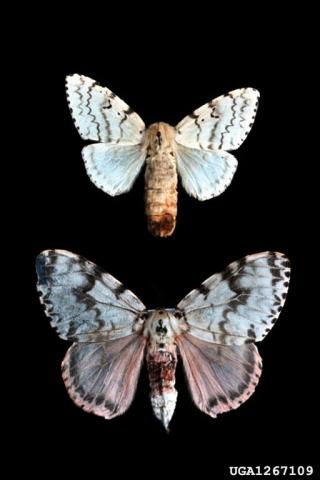Asian Defoliator Survey
According to the Kentucky Division of Forestry, Kentucky has one of the most diverse hardwood species mixes in the nation, second only to Florida. 48% of Kentucky is forestland, with 75% of the forestland being the oak-hickory forest type (www.forestry.ky.gov). A 2012 article on www.kentucky.com stated that Kentucky State Parks generate approximately $48 million in annual income which is nationally the third highest revenue of all state parks systems (after California and New York). Kentucky’s state parks have the most lodge and conference facilities of all state parks systems in the nation. A 2015 study by the University of Kentucky estimated the economic impact of state parks at $889 million. In 2019, 7.9 million people visited Kentucky state parks (www.kentuckymonthly.com). Many of the state parks have campgrounds which are popular destinations for both in-state and out-of-state visitors.
In addition to the tourism aspect of Kentucky’s parks system, Kentucky’s forest and wood industry is extremely important to the state. In 2022, that industry contributed over $18 billion to the economy and employed over 57,000 Kentuckians (KY Forest Economic Impact Report 2022-2023). Kentucky is one of the top three hardwood timber producers nationally and leads the southern United States in sawlog and veneer production. White oak, red oak, and yellow poplar are the top three species of lumber produced (www.forestry.ky.gov).
This survey will allow us to target 5 Asian defoliator moth pests of concern to Kentucky's forests in terms of the ecology, the economic importance of the lumber industry, and the economic importance of tourism and the state parks system. This will be a trapping survey designed to detect five Asian Defoliator Lepidopteran pests: Asian Spongy Moth, Japanese Spongy Moth, Rosy Moth, Hokkaido Spongy Moth, and Casaurina Tussock Moth. As of 2022, these moths are called the flighted spongy moth complex.
The establishment of any of these pests would have large negative impacts on the state’s valuable forests. We will primarily select survey sites that are common pathways of introduction of these pests such as commercial and industrial areas, rest areas, and sites with shipping container movement.

Photo: USDA APHIS PPQ
